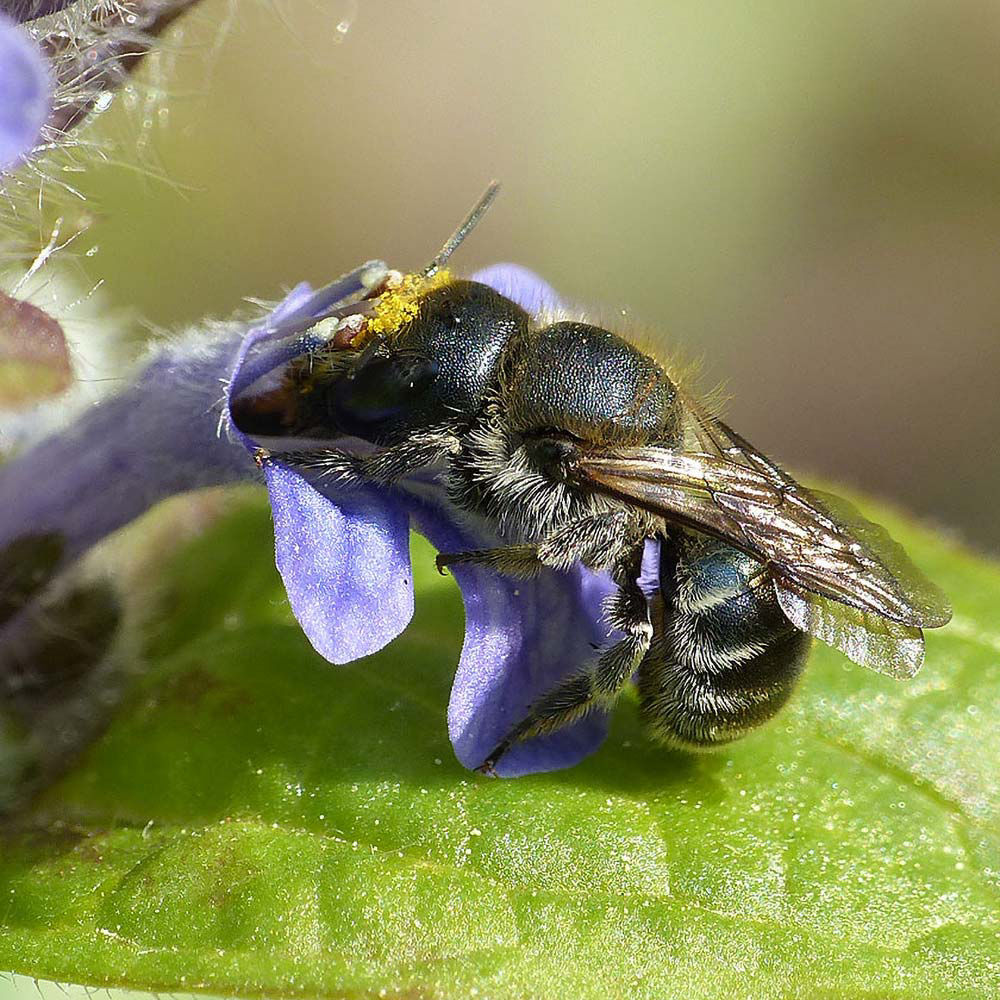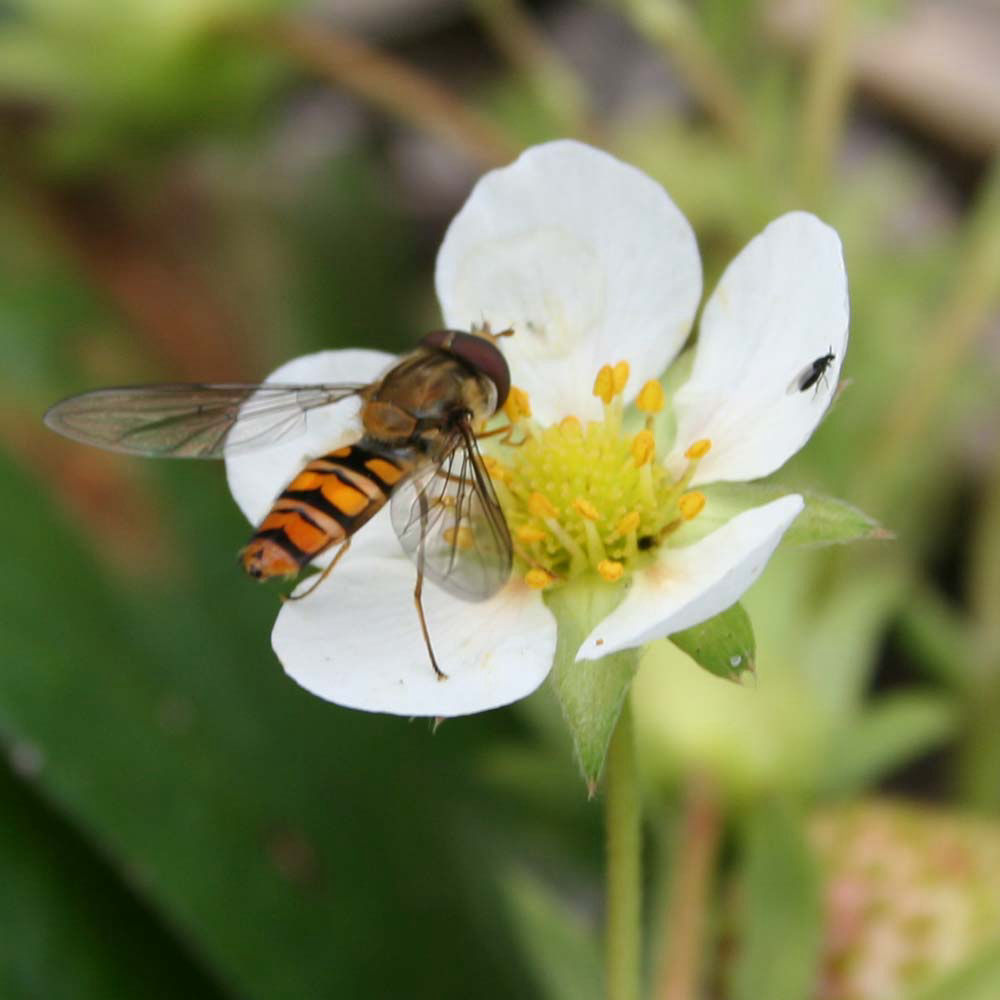What can public
authorities do?
Pollinators enhance the public space
(Local) public authorities determine how public green spaces are structured and managed. Such green spaces should be made a lot more bee-friendly by choosing indigenous plants and trees, adopting bee-friendly management measures, and adding nesting options for wild bees. Our total surface area of public green spaces is substantial so they can play a major role in making a difference and improving pollinator habitats. Communicate any transformational changes in the structure and management of these areas actively within the communities and make sure people can ask questions or raise issues.
Become a source of inspiration with a bee-friendly outdoor space at public authority buildings
The outdoor spaces that are part of public authority premises can also be made more bee-friendly. Doing this can inspire users and visitors to think of what they can do themselves.
Add bee-friendly conditions to leasehold contacts
Public authorities often own land that they lease to farmers. They can add additional bee-friendly conditions to such leasehold contracts, such as reducing the use of artificial fertilisers and/or pesticides or the creation of flower-rich borders. Municipalities can offer farmers a ground lease-reducing ‘menu’ with various bee-friendly options farmers can choose from.
Cherish the landscape – seeking and implementing a quality-improving ambition
Municipalities can improve the protection of landscape elements like sandy lanes and woodlands by including them in a green structure vision or zoning plan. Spatial developments or the necessary CO2 compensation measures can be a financial drive to improve the quality of the landscape as a whole. For example, by setting up a fund for spatial quality.
Become a partner in a bee landscape network
Civil servants can support the bee landscape by tapping into their professional network, by informing the network about subsidies they can get, or by allocating funds or grants. Taking measures doesn’t have to come at additional costs as municipalities often already take part in certain subsidy schemes that provide the required funding.
Financial support for a bee landscape
Public authorities can also back a bee landscape financially by allocating budgets. This allows them to safeguard that the network of local and regional actors can (continue to) develop and that the energy, know-how, and budget invested by the participants are used efficiently to result in a positive impact on pollinators and the landscape quality.
The value of a bee landscape approached from multiple sectors
A bee landscape is not only important for nature in general but also offers an opportunity to realise goals set up by other sectors. Look at a bee landscape from different perspectives to see how it can contribute to a sectoral goal. Look for connections with other national, provincial, or municipal public authority goals. By using a bee landscape as an interconnecting concept, a more integral and elaborate vision can be formed.
Promote the vision and good examples
This makes it easier to explain why the realisation of a bee landscape is important and attractive. It increases people’s familiarity with the concept and their support for the initiative, and possibly results in new parties joining in.





Share this on